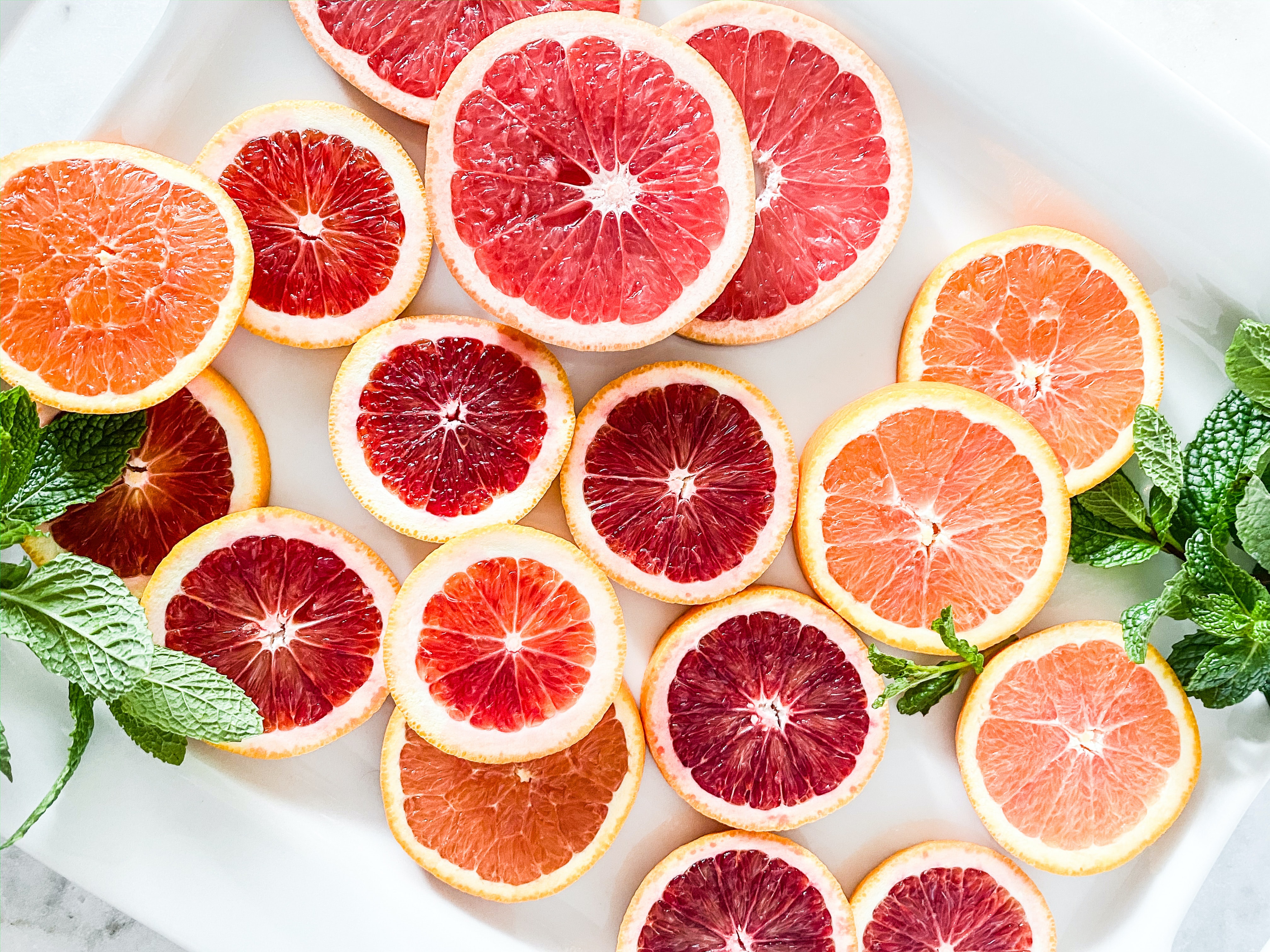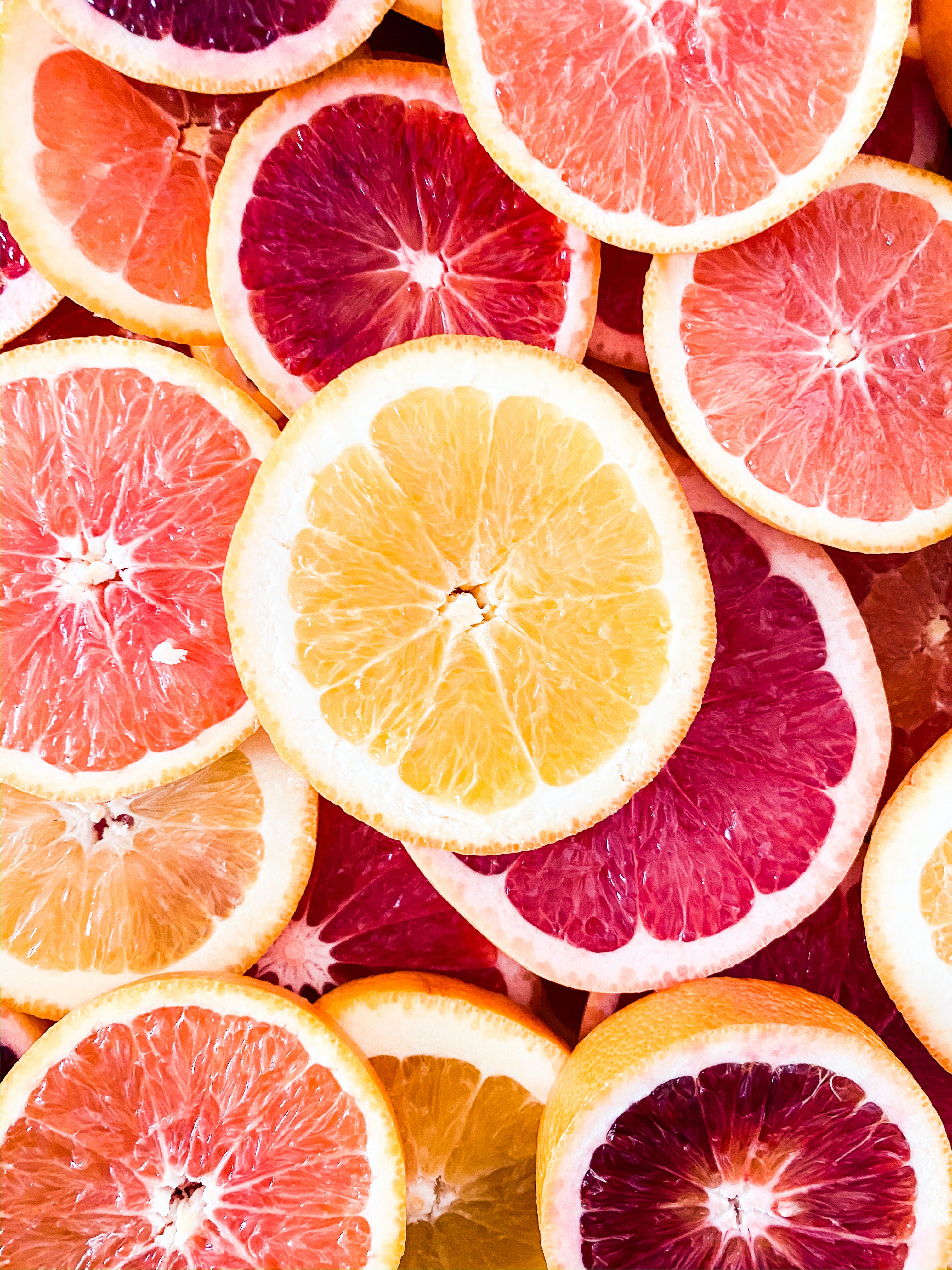
The grapefruit earnt its name because rather like grapes, it hangs in bunches or clusters. It is a fruit grown throughout the tropics. The fruit generally has the highest quality. It is also one of the largest of the citrus fruits although smaller than its cousin the pomelo/shaddock. The diameter is anywhere between 10 and 15 cm.
All citrus fruits has a middle lamella made up to pectin and various celluloses.
Harvesting and Storage
Canning of grapefruit segments began in the USA in Florida between 1919 and 1920. It was one of the most popular formats for a citrus orange – more so than for orange. In the 1930s it became the principal form of delivering citrus fruit to the general population. At the time these segments were the basis for fruit cocktails, various desserts including pavlovas and in salads. There was a time when segments were frozen for convenience but needed to be thawed before consumption which spoilt their integrity and general usefulness.
The main variety grown at the time in Florida was Duncan which had seeds but was regularly canned. In Florida, about 20% of the fruit was canned back in the 60s and 70s.
Grapefruit is still available as segments and can be canned but the market is not as strong as it used to be.
Segmentation of Fruit

Segments are prepared from fruit endocarp by separtaing unbroken juice vesicles from these segments by the removal of the capillary membrane.
Fruit of high quality is graded and sized by comparing with model or target fruit. Misshapen or non-uniform fruit is sent for juice processing. The fruit is washed and passed into scalding chambers which are steam chambers or placed in hot water at 91C/196F for 5 minutes to loosen the peel from the pulp. It is a similar process used in processors of mandarin segments. The fruit is cooled by cold water sprays and the peel invariably removed by hand. Great armies of peelers are on hand for what is a laborious and demanding task.
The peeled fruit is passed through tanks of 2% sodium hydroxide or lye for about 30 seconds to remove the white albedo and any segment membranes. The alkali damages the pectins remaining around the fruit. Further cold spraying removes the lye solution.
Most segments are packed in syrup in cans which are heat treated to remove air, and then in-pack pasteurised in hot water tanks before cooling.
Heat processing is necessary to keep segments whole. The main processing parameter is 80ºC for between 25 and 28 minutes. Some processors add sodium benzoate up to 400 ppm. If there is under-processing, the segments fall apart because enzymes are improperly denatured. Over-processing causes damage to juice sacs and generally softening grapefruit segments. This leads to loss in drained weight, and increased fragility.
Canned segments are best stored as cool as possible because storage at room temperatures leads to darkening through browning.
More advanced operations still use citrus sectionizers.
The quality factors defining grapefruit segments are:-
- firmness
- drained weight
- degree of broken segments
- fragility measures
Most fruits such as peaches and apricots increase their weight on canning because of their relatively high pectin content (Luh et al., 1959). Most segments are prepared in A2 size tin cans.
Efforts to improve the texture of grapefruit has been achieved by adding calcium salts and low-methoxyl pectin to a weighting syrup.
The firmness of segments is graded based on shear press units. When the figure is less than 450 units, thee are rated as too soft. When samples are between 450 and 600 SPU, they are rated soft and those between 600 and 850 are rated as firm. Anything higher than 850 is rated as tough.
References
Levi, A., HERSHKOWITZ, E., & Ludin, A. (1971). Studies on the quality characteristics of canned grapefruit segments. III. Addition of surfactant agents during the lye‐peeling process to improve their quality. International Journal of Food Science & Technology, 6(3), pp. 265-271
Ludin, A., SAMISH, Z., Levi, A., & HERSHKOWITZ, E. (1969). Studies on the quality characteristics of canned grapefruit segments: I. Factors affecting the drained weight and texture. International Journal of Food Science & Technology, 4(2), pp. 171-177.
Luh, B. S., Leonard, S. G., & Mrak, E. M. (1959). Fd. Technol. Chicago, 13, pp. 152.
Sinclair, W. B. (1972). The grapefruit: its composition, physiology & products (Vol. 4029). University of California, Agriculture and Natural Resources.
Leave a Reply